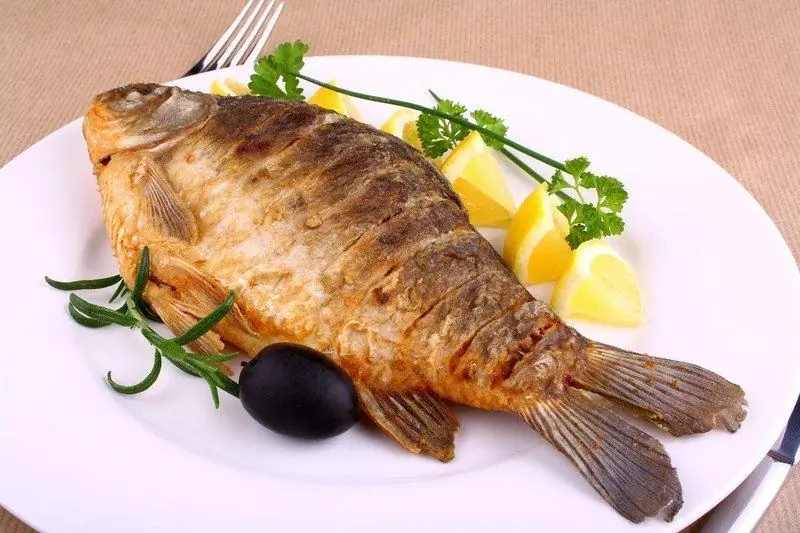
Table of contents:
- Author Bailey Albertson [email protected].
- Public 2023-12-17 12:53.
- Last modified 2025-01-23 12:41.
5 rare perennials that even neighbors will admire

There are so many flowering perennials nowadays that it can be difficult to choose plants for your garden. But if you want something unusual, pay attention to rare, interestingly blooming crops, which are not so often seen on the plots.
Uvularia

A herbaceous perennial plant that can surprise with its unusual flowering. Its drooping yellow flowers look very sophisticated. They will decorate even a shady corner of the garden, and at the same time look like a part of the wild. Although this perennial comes from a temperate climate, it feels quite well in our zone.
The culture blooms in spring, for three weeks. She needs a shady place - uvularia grows well under trees and shrubs. She is hygrophilous, does not tolerate drought. The soil is selected loose, sour. The plant does not overgrow with weeds and does not need pruning.
Astrantia

Perennial Astrantia has about 10 varieties that can be grown on the site. It has a straight, slightly leafy shoot. Astrania's main treasure is its star-like flowers. Inflorescences are saturated with pink, white, ruby shades.
Abundant flowering, very decorative, bright. She is able to decorate with herself a flower garden, mixborder, borders and paths are decorated with it. But the plant blooms only three years after planting.
The main requirement for growing Astrantia is loose nutritious soil, sufficient lighting. If you keep the soil moist, but not wet, and cut off the faded inflorescences in time, you can even achieve re-flowering.
Knifofia

This is a beautifully blooming exotic perennial native to warm countries. He is from the genus of liliaceae, therefore, outwardly it looks a little like a lily. A rosette of narrow long leaves emerges from the rhizome, peduncles are high, from 60 cm to 1.5 meters.
The plant is light-loving, does not tolerate shade. The soil of knifofia is needed loose, without stagnant water, fertilized. In hot weather, the crop is watered more often. For the winter, the arrows of the inflorescences are cut off, and the leaves are covered with spruce branches. You can also dig up a bush and transplant it into a pot so that it overwinters at home.
Meconopsis

This amazing plant is also called the blue Himalayan poppy. Planted in a garden, it will immediately draw attention to itself. Delicate silky sky-colored petals and huge wide leaves - this is the appearance of a handsome man from the Himalayas.
The plant prefers coolness, although it can grow in open areas. He also needs protection from the winds. Small species grow well in rocky gardens, decorate borders and flower beds. The soil should be sufficiently fertilized, slightly acidic, humus-rich and moist.
Seven-part gentian

In nature, culture is common mainly in temperate climates. It grows along the banks of reservoirs, in meadows, in the mountains. Shoots are straight, stunted, can grow 0.3 meters in height, flowers are often blue or light blue, in the form of large bells. The buds form groups of up to 8 pieces each.
The gentian loves moisture, especially watering is necessary during flowering and during dry periods. You can mulch the soil with straw or sawdust.
Culture effectively decorates both a small garden and a large area. The plant looks natural in a rocky garden. It harmonizes with perennials such as irises, saxifrage, edelweiss, arabis.
Recommended:
Perennials For Summer Cottages Blooming All Summer: A Selection Of Interesting Perennial Flowers

Description of perennial flowers blooming all summer: appearance, growing conditions, breeding method. Lots of photos
The Ugliest Soviet Women Everyone Loved

10 ugly Soviet actresses. Why everyone loved them
What Absolutely Cannot Be Done When Frying Fish: Sea And River

What should not be done while frying fish in a pan: overcooking, undercooking, defrosting incorrectly, turning often, frying without skin, etc
10 Main Prohibitions Of Christmas: What You Absolutely Shouldn't Do

In order not to cause trouble, try not to swear at Christmas, not to clean the house and not to sew, it is also not allowed to guess, borrow money and leave untouched dishes on the festive table
Perennials That Bloom In The Shade

What beautiful shade-loving perennials can be planted on your site
